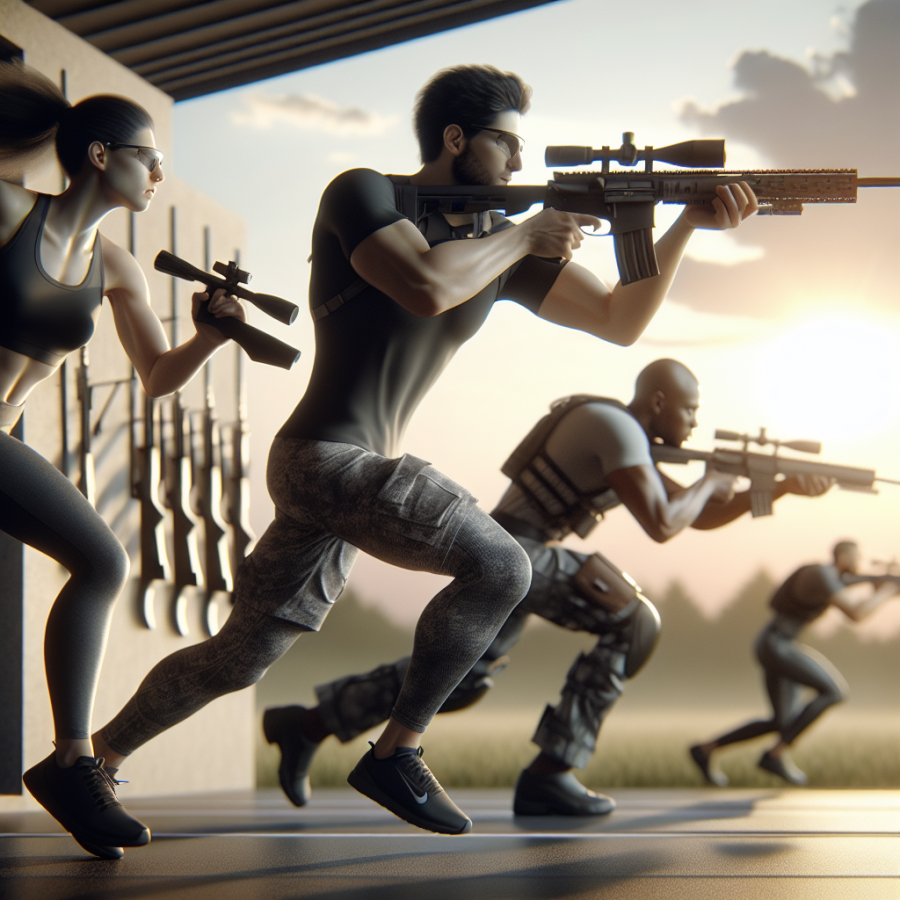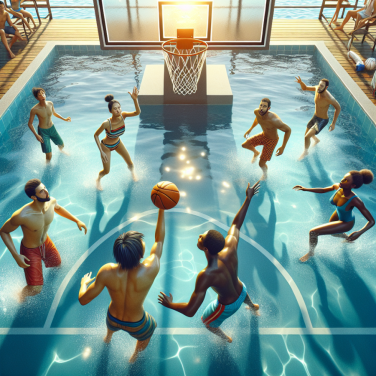Strategic Planning for Optimal Course Navigation in Target Sprint Competitions
Strategic planning is critical in the context of Target Sprint competitions, where athletes must flawlessly blend running and shooting excellence. Maximizing efficiency on the course involves a deep understanding of the competition's layout, managing energy reserves, and navigating the course in a manner that conserves time without compromising shooting performance.
**Course Familiarization and Mental Mapping**
Prior to the competition, it is essential for athletes to familiarize themselves with the course. This involves walking through the course, noting the terrain, identifying potential hazards, and recognizing key landmarks. Athletes are encouraged to create a mental map of the route, which will allow for smooth navigation during the race and help maintain a steady pace.
**Pacing Strategy**
Effective pacing is paramount. Athletes need to find a balance between speed and energy conservation. Starting too fast can lead to premature fatigue, adversely affecting shooting accuracy. Therefore, athletes should plan their running pace so that they reach the shooting range with sufficient stamina to maintain a calm and stable shooting stance, ensuring accuracy.
**Transition Efficiency**
Transitions between running and shooting are crucial. Athletes should practice seamless transitions into and out of the shooting range. This includes training for the quick placement of the firearm, the swift attainment of a stable shooting position, and leaving the station promptly after completing the shots. Minimizing time spent in transition can result in significant gains over competitors.
**Shooting Strategy**
Strategic planning also extends to the shooting component. Competitors must decide whether a conservative approach, prioritizing accuracy over speed, will serve them better than a quicker but potentially less accurate shooting rhythm. This decision should be informed by the athlete's individual shooting proficiency and the specific demands of the competition's course.
**Adapting to Weather and Environmental Conditions**
Weather conditions and the environment can greatly impact both running and shooting phases. Athletes should prepare for a range of scenarios by training in various conditions and developing strategies to cope with factors such as wind, which can affect shooting accuracy, or rain, which might impact the track's traction and visibility.
**Energy Management and Nutrition**
Energy management throughout the race is a delicate balance that proper nutrition and hydration can support. Adequate carb-loading prior to the event, along with the strategic use of energy gels or drinks during the competition, can provide the necessary fuel for endurance and concentration.
**Technique Refinement**
Beyond physical preparedness, technique plays a substantial role in navigation and energy conservation.
Read also:
Top 10 Crypto Brands Scoring Big in Sports Sponsorships
Enhancing Shooting Accuracy and Transition Speed for Peak Performance in Target Sprint Events
Improving marksmanship and increasing the speed of transitions are pivotal in achieving peak performance in Target Sprint events. This unique discipline, wherein athletes combine running with shooting, requires not only cardiovascular endurance but also the ability to quickly calm the heart rate and steady the hand for precision shooting.
To enhance shooting accuracy, it is essential for competitors to engage in consistent practice that focuses on developing a stable shooting stance. This stability is crucial, as the rapid heart rate from running can make holding the rifle steady a significant challenge. Athletes can benefit from incorporating exercises that strengthen core muscles, as these are fundamental to maintaining balance and posture during shooting.
Breathing techniques also play a substantial role in improving shooting accuracy. Mastery of controlled breathing helps in reducing the impact of an elevated heart rate, allowing for smoother trigger pulls. Athletes can practice these techniques during training by simulating high-intensity running followed by shooting drills. This not only enhances skill but also builds muscle memory for competition scenarios.
Dry firing, the practice of pulling the trigger without live ammunition, is another valuable method. It permits athletes to work on their trigger technique and address any issues without the added pressure of live fire. Dry firing can be safely conducted at home, allowing for additional practice outside of the range.
Transition speed between running and shooting is equally critical. The capacity to swiftly switch from a high-intensity physical activity to a precision-based skill is what separates top contenders from the rest. The key to a rapid transition lies in the economy of motion—streamlining every action to save precious seconds.
Interval training can be beneficial for improving transition speed. This training alternates between sprints and recovery periods, mimicking the physical demands of a Target Sprint event. Adding mock shooting setups during the recovery phase helps athletes adapt to the switch more effectively.
Moreover, the physical setup of the shooting range can impact transition times. Athletes should practice with a range setup that is as close to competition conditions as possible, which allows them to develop a mental map of the environment, thus enabling faster navigation during the actual event.
Equipment readiness is also paramount in ensuring swift transitions. Competitors should ensure that their rifles are easily accessible and that they are proficient in quickly assuming the correct grip and sighting. Repeated practice of picking up the rifle, shouldering it, and acquiring the target can shave seconds off the transition time.
Recovery strategies are another aspect that can aid in maintaining speed and accuracy through the race's duration.




